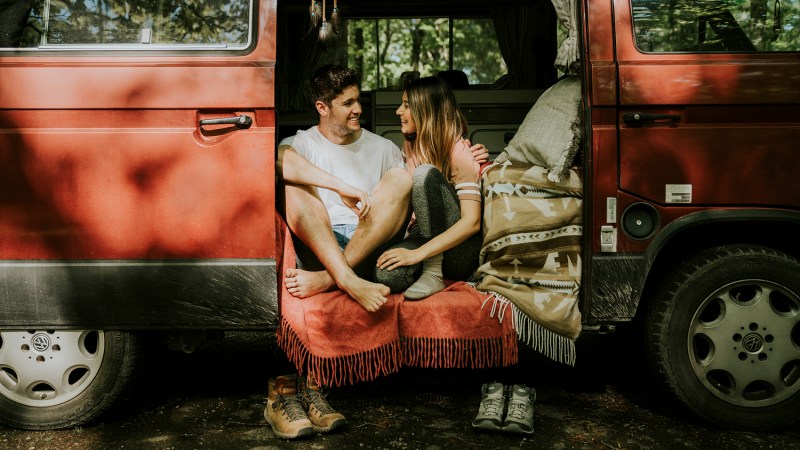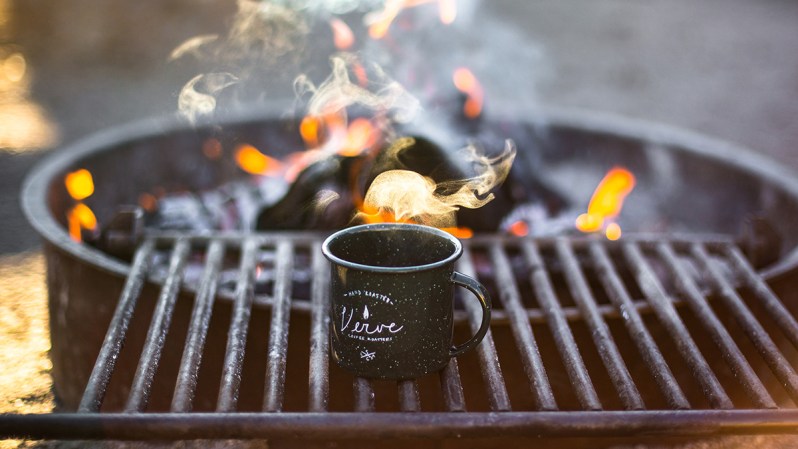Currently on a seven-month trip to visit all 59 U.S. National Parks, travel photographer Renee Hahnel and her husband Matthew have perfected the art of living on the road.
The photo/blogging duo was sent on this epic road trip by plant-based, vegan protein company EVOLVE to form an extensive guide to the scenery, views, activity, hikes, and (duh) best photo ops. And hats off to the Hahnels, because if you’ve ever driven cross-country or been away from home traveling for a prolonged time, you know how difficult it is to normalize your lifestyle — and, most of all, your travel meals.
EVOLVE’s Trish Griffin, a registered dietitian and sports nutritionist, tells The Manual, “Traveling can put extra demands on your body. By taking in the right foods at the right time, you will be better equipped to stay alert and energized to drive, hike, and explore, wherever the road may take you.”

Griffin adds that if you’re on the road for outdoor exploration, changing altitudes, and exerting effort, upping your fluid intake and staying hydrated is key. You should also decrease salt intake; eat high-carbohydrate, moderate protein, low-fat meals; and consider smaller meals with more snack options. “Happy gut, happy traveler,” Griffin says. “And stick to the foods you’re familiar with!’
For examples of what those foods, snacks, and meals could look like, we sat down in the Hahnel’s cozy van over a post-hike EVOLVE protein mocha to talk van-burners and easy dinner recipes. Plan your next cross-country adventure with these nuggets of food wisdom and never rely on fast-food again (and read up on our guide to living in a van while you’re at it).
Travel eating almost always sucks. How do you avoid gut-turning fast-food?
Having a van with a kitchen definitely allows us to living more “normally” on the road and eat healthy when restaurant/grocery choices are limited. Plus, being able to sit down together for a meal, at a (small) table with home-cooked food is a massive perk.

What are your travel snack essentials?
Fruit, cheese and crackers, nut butter, or a protein shake. We love the EVOLVE mocha shake for a super quick refuel pre- or post-hike.
How about meals? Is it possible to cook hearty, healthy dishes from a van?
We eat a lot of meals that have a fresh component to it (e.g. vegetables, salad, fish), plus a pre-made/packaged ingredient (e.g. rice, pasta, sauces) for ease of preparation and to save time. Plus, we couldn’t live without our hot drinks like tea, coffee, and hot cocoa.

What three easy meals can any traveler make on the road (in a van)?
For a filling and yummy breakfast, we love throwing some potatoes, spinach, broccoli, red bell peppers, and eggs in a pan and frying them up. We’ll add cheese, salt, and pepper for seasoning. Protein pancakes are also fun to make on slower, meandering mornings — using EVOLVE protein powder and fresh berries.
For lunch, we don’t have a toaster in the van, but will use a frying pan to toast — topped with cream cheese and smoked salmon. Cous cous, vegetables, and tuna is another “throw-it-together” type of lunch for us.
Then a healthy and easy dinner option is pan-cooked fish fillets and salad or cooked vegetables.
What cooking equipment do you have?
We mostly use our two burner propane stoves, medium fry-pan/pot, kettle, chopping board, and pot drainer. We also frequently use insulated tumblers so our
Why are nutritious meals important while you’re on the road?
We do a lot of hiking and exploring, so staying fueled and healthy is a must. We also have some long driving days and need to stay alert and focused.
What other “accessories” do you suggest bringing to enhance the travel dining experience?
Mood lighting and music always make a pleasant dining experience. We have some fairy lights, candles, and portable speakers in the van.


